|
|
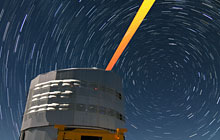
|
3 September 2013: The Call for Proposals for observations at ESO telescopes during Period 93 (1 April–30 September 2014) has been released. Please consult CfP 93 document for the main news and policies related to applying for time on ESO telescopes. All technical information about the offered instruments and facilities is contained on ESO web pages that are linked from the ...
|
| Read more |
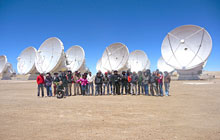
|
3 September 2013: ESO has a prominent fellowship programme in both Garching (Germany) and Santiago (Chile), with a yearly application deadline. The goal of these fellowships is to offer outstanding early-career scientists the opportunity to further develop their independent research programmes in an exciting scientific environment with close contact to the activities and staff at ESO. The closing date for applications to ...
|
| Read more |
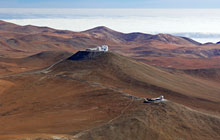
|
3 September 2013: The Science Archive Facility now provides community access to the first data products from the VST public survey projects. Following a year and a half of successful scientific operations, the VST public surveys have returned nearly 1.5 TB of reduced data products, which can be queried for and downloaded via dedicated query interfaces. A summary of the ...
|
| Read more |
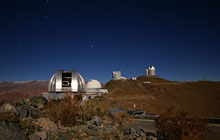
|
3 September 2013: In a collaboration between the Observatoire de la Côte d'Azur (OCA, Nice) and ESO, stellar radial velocities, and atmospheric parameters, including effective temperature, surface gravity, mean metallicity and enrichment in alpha-elements, have been obtained by analyzing 21551 FEROS spectra from the Science Archive Facility with the MATISSE parameterisation algorithm. A dedicated web interface allows these data to ...
|
| Read more |
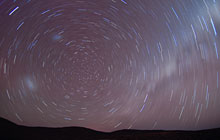
|
3 September 2013: The science results coming from ESO's facilities are not just of interest to the astronomical community, but also to the public at large. ESO's education and Public Outreach Department (ePOD) is always pleased to hear about new results that might make ESO science press releases. Such releases not only give your results wider coverage — often in national newspapers and ...
|
| Read more |
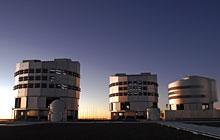
|
2 September 2013: A new version of ACE, the Access Control at ESO, has been released. This tool enables successful ESO proposal PIs to delegate and share with their collaborators access to the Phase 2 observation preparation, retrieval of proprietary data from the Science Archive and delegation for the Phase 3 data products submission. The ACE tool is reached via ...
|
| Read more |
Upcoming ESO or ESO-Related Workshops
- SCIENCE OPERATIONS 2013: Working Together in Support of Science
ESA/ESO Conference at ESAC, Madrid, Spain, 10 - 13 September 2013
The objective of SCIOPS2013 is to present and discuss the various approaches to science operations in spacecraft missions and ground-based facilities for Astronomy and Solar System Science. The meeting will cover all phases of science operations, from initial concepts to legacy products, including general organisation and management aspects, community support and services, instrument planning, handling and calibration, science data processing and archiving. The Call for Abstracts is open and more details are available here. Registration will close on 15 July 2013.
- Challenges in UV Astronomy (ESO/NUVA/IAG Workshop)
Auditorium, ESO Garching, 7 - 11 October 2013
Jointly organised by the Network for UV Astronomy (NUVA), ESO and the IAG Brazil, this workshop will focus on efficient exploration from the ground of the UV spectrum region. New UV instrumentation, such as CUBES - a joint ESO-Brazil high-resolution UV spectrograph - being planned for the VLT, will open up observation of UV spectral features. The present and future of the field and, in particular, the scientific case of CUBES, will be discussed. Further details are available here or please contact uvastro@eso.org for more information. The registration deadline is 9 September 2013.
- Joint ESO and Observatoire de Paris Workshop: Metal Production and Distribution in a Hierarchical Universe
Observatoire de Paris Meudon, 21 - 25 October 2013
Metals trace the full evolution of the Universe and determining their relative abundances in different environments, and across cosmic time, reveals the underlying star formation history and gas exchange processes. Recent progress in instrumentation and modelling now means that metal production and distribution can be used to test our ideas of galaxy evolution at many different hierarchical scales: from stellar clusters to clusters of galaxies. Tracing metals across cosmic time requires equivalent investments in observational facilities and simulations and the meeting will review the state of the art in all the different research areas.
- ESO Workshop on Deconstructing Galaxies: Structure and Morphology in the Era of Large Surveys
Santiago, ESO Santiago, 18 - 22 November 2013
The study of the structure and morphology of galaxies is one of the major astronomical tools to address how galaxies form and evolve. There has been much recent progress in understanding the properties of different structural components in nearby and intermediate redshift (z ~ 1-2) galaxies. The strengths and limitations of the different techniques for obtaining structural measures of galaxies, particularly with regard to handling large surveys, will be highlighted. This conference will bring together over 100 observers and theorists, and it is intended to be highly participative, with substantial time devoted to discussions. More details can be found here.
- ALMA Community Days 2013: Preparing for Cycle 2
Auditorium and Council Room, ESO Garching, 19 - 20 November 2013
The aim of the 2013 ALMA Community Days is to optimally prepare the astronomical community for ALMA Cycle 2 proposal submission. Besides a series of technical and scientific presentations, there will also be practical hands-on tutorials for the ALMA proposal preparation software, and an introduction to (sub)mm-interferometry techniques for novices in the field.
- Workshop on 400 Years of Stellar Rotation
Natal, Brazil, 21 - 26 November 2013
In 1613 Galileo Galilei observed solar spots and interpreted their motion as due to solar rotation. After 400 years we are able to quantify in detail the behaviour of the rotation of the Sun in time, as well as the evolutionary behaviour of stellar rotation all across the HR Diagram. This meeting will consider all aspects of stellar and solar rotation and, in addition, present the state of the art of stellar rotation coming from the space missions CoRoT, Kepler and Spitzer. The workshop is co-sponsored by the European Southern Observatory and the International Institute of Physics of Natal and further details can be found here. The deadline for registration is 01 June 2013.
- Astrotomography II - Imaging at the Micro-arcsecond Scale
Santiago, ESO Santiago, 10 - 13 December 2013
Astrotomography is a generic term for indirect mapping techniques that can be applied to a huge variety of astrophysical systems, ranging from planets, through single stars and binaries to active galactic nuclei. Given the increase in scientific output of astrotomography, it is timely to review the methods, chart progress in the field and prepare the next generation of astronomers to use the tools. The workshop themes will cover computational methods, techniques and new developments, new instrument possibilities and applications. In addition to reviews and contributed talks, an additional day is planned with a hands-on training workshop. The registration deadline is 31 October 2013.
- 3D2014 - Gas and stars in galaxies: A multi-wavelength 3D perspective
Garching, 10 - 14 March 2014
This workshop aims to bring together the optical/near-infrared, millimetre and radio communities working on 3-dimensional extragalactic data, following on from the similarly themed 2008 workshop. Science topics are centered on both gas and stars in galaxies and examples include dynamics, AGN and supermassive black holes, high redshift galaxies and deep fields. Tools to visualise and analyse multi-wavelength data cubes will also be discussed. In association with the workshop, three parallel user workshops on reduction and analysis of 3D data from KMOS, MUSE and ALMA will be held. Further details here or by email to gal3d2014@eso.org.
|
|
|
|
|
|
|
|